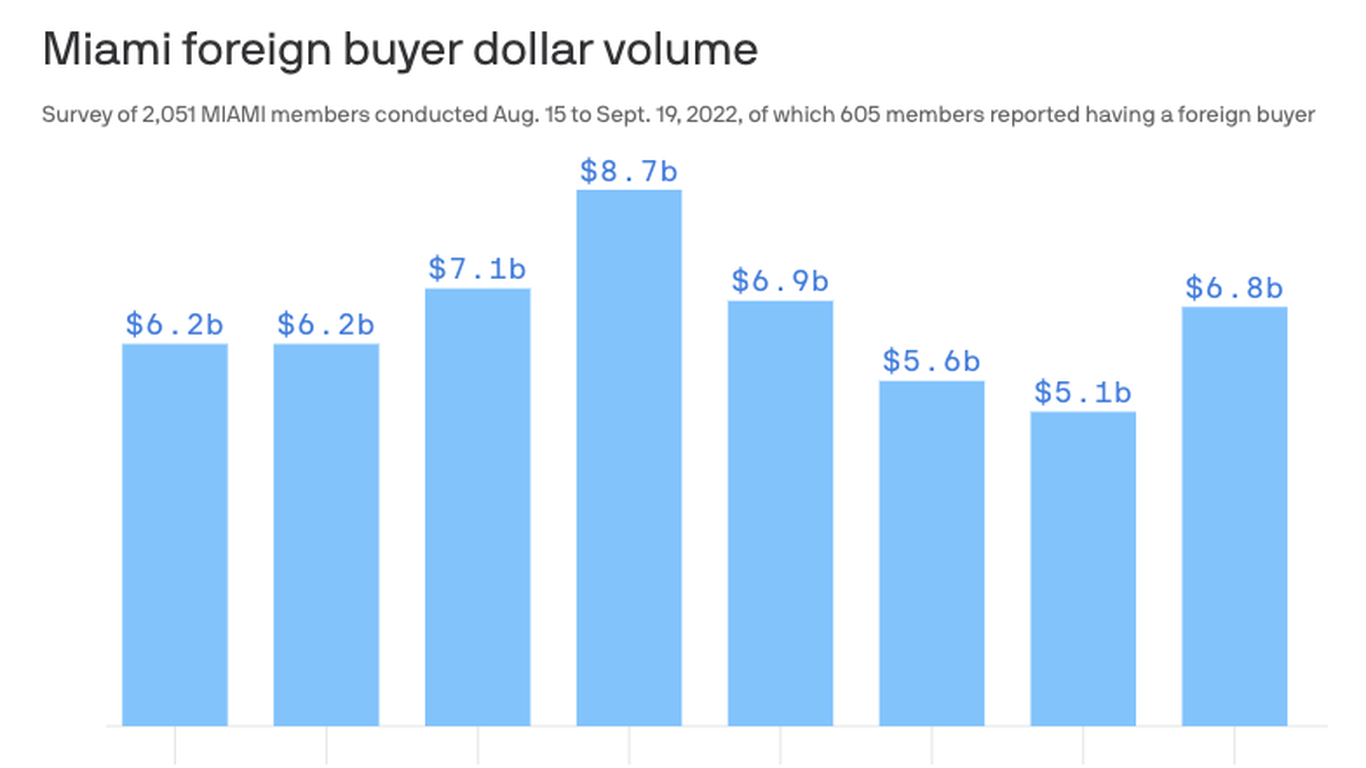Latest Miami housing data shows housing prices continue to rise
Single-family home and condo prices continue to climb in South Florida, despite a slowdown in sales activity.
/el Nuevo Herald
As many South Florida residents face a housing affordability crisis, local home prices continued to rise last month.
Prices for single-family homes and condos in Miami-Dade County and Broward County increased between 9% and 14% in November compared to the same month in 2021, according to a report released on Wednesday by the Miami Association of Realtors.
The Miami-Dade median sale price in November for a single-family home was $550,000, up 9% from $502,750 a year earlier. The median price for a condo was $395,000, up 14% from $326,790 the previous year. There are four months of housing supply of single-family homes and condos in Miami-Dade.
Click to resize
Florida Atlantic University finance professor Ken Johnson said that a lack of inventory remains an issue in Miami’s housing market. He said turning empty homes into longer term rental properties rather than Airbnb rentals could improve that situation.
“We have a huge number of Airbnbs that have taken long-term rentals off the market and made them available for short-term rentals,” he said. “A lot of those are switching back to long-term rentals because rents are so high.”
The Broward median sale price for a single-family home in November was $540,000, up 11% from $485,000 in November 2021. The median price in November for a condo was $255,000, an increase of 10% from $232,500 in November 2021.
Johnson said people owning second homes in South Florida who only visit for the winter from places like Boston or New York should also consider renting their homes to local residents. With those homes added to the housing supply, it could increase inventory and lower rent. He also said that homeowners associations can reassess their rigid guidelines to allow more renters into their communities.
“I think as a society, we’re going to have to put pressure on local associations and condo homeowner associations because they’re anti-rental and a major contributing force to the rental crisis,” he said. “There is no evidence that having a rental unit in your condo affects value negatively.”
Clidiane Aubourg is a resident who has felt the pressure of the housing affordability crisis. A former property owner in Miami Beach who had to sell her property to make ends meet, Aubourg is one of many Miami residents trying to find a new home. The rent at her Little River apartment was initially $900 a month. Gentrification and a volatile housing market have reshaped her community.
“What’s happening now is the people who are tech bros or New York transplants making $75,000 a year and up, those people are hunkering down in their little homes and not budging. I don’t know how Miami got into this situation. I can walk two blocks from my house to a place where you can pay $150 for a meal,” she said.
Through much of the pandemic, Aubourg, 53, has worked remotely as a customer service representative from her home in Little River. Between June and November she sought a new job and fell behind on her rent. Her landlord has begun eviction proceedings.
Aubourg applied for Miami-Dade County’s Emergency Rental Assistance Program in October and qualified for it in December. She said she has had difficulty using the assistance because the program depends on a landlord willing to accept it and the social worker assigned to her has not succeeded in finding her a leasing office or landlord to work with the program.
“I’ve shown up at every affordable housing complex within a 40-minute drive of Miami,” she said. “I was part of the middle class and that’s all gone now.”
This story was originally published December 21, 2022 6:36 PM.


